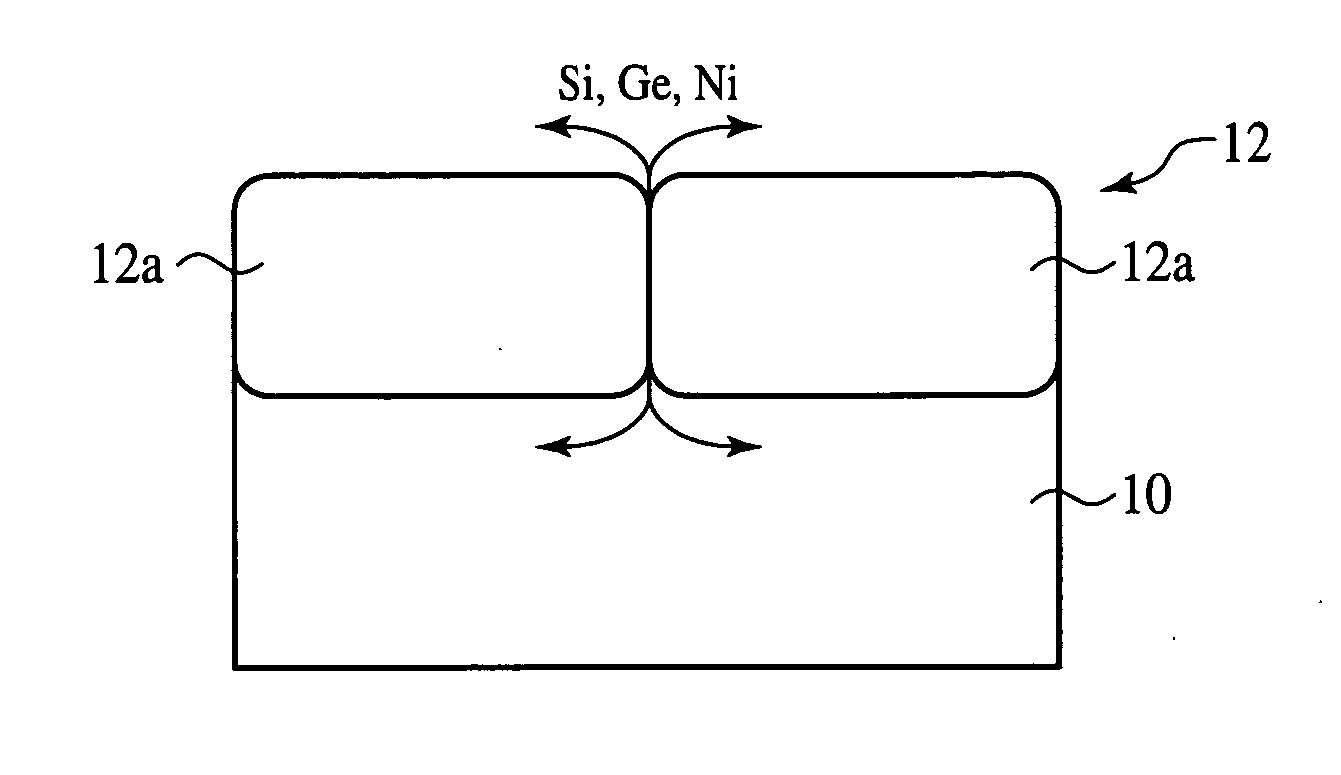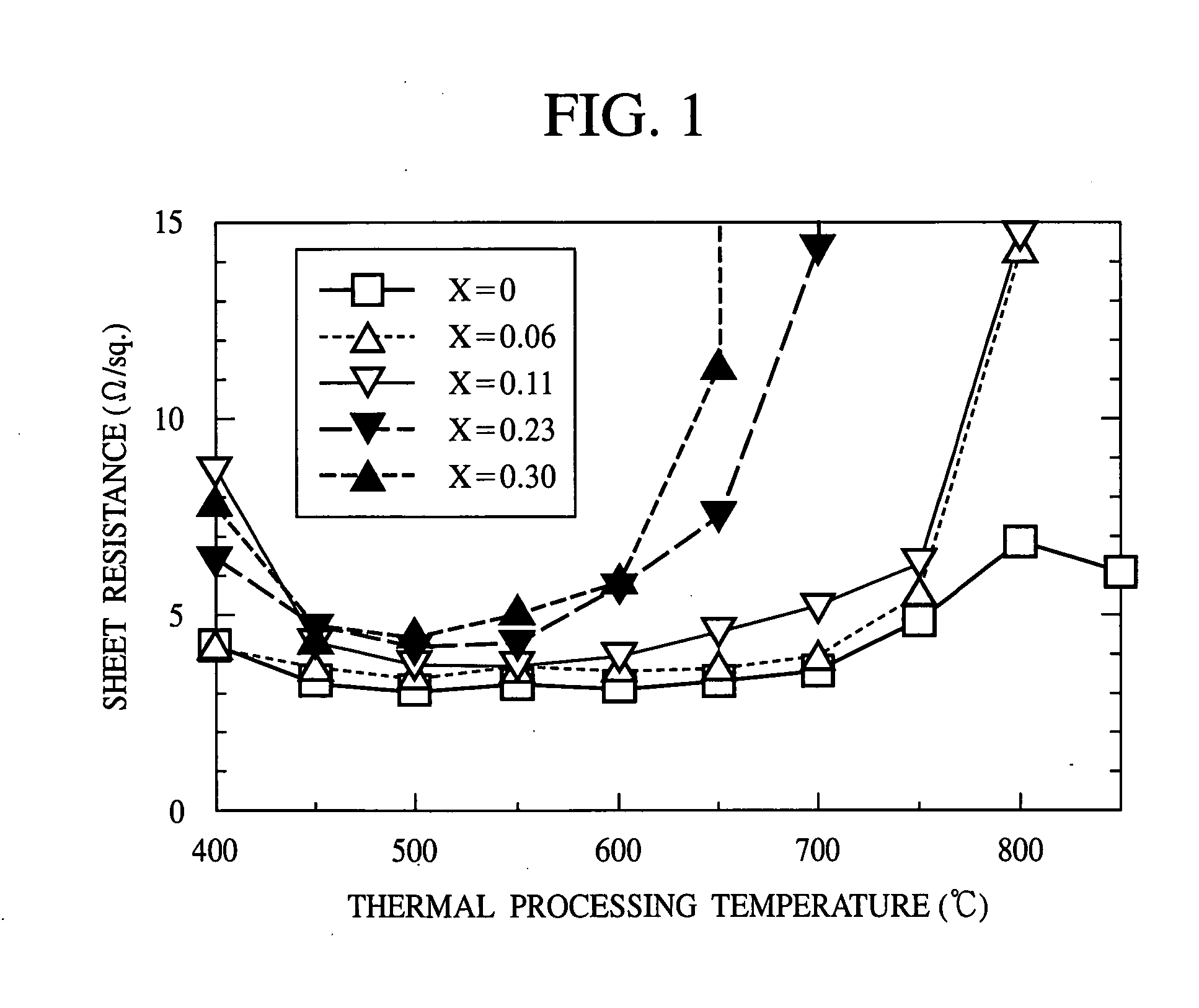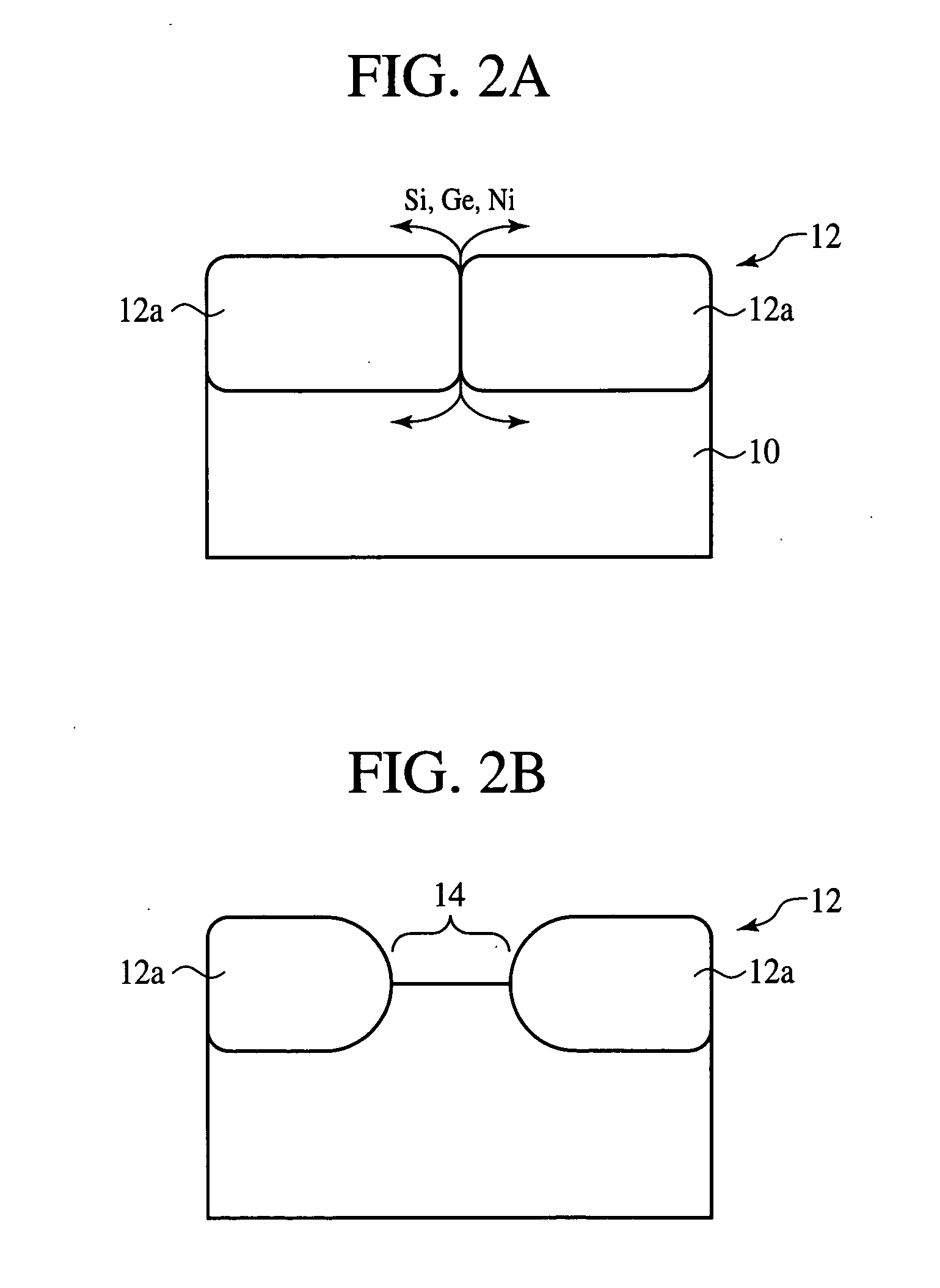Semiconductor device fabrication method
a technology of semiconductor devices and fabrication methods, applied in the direction of semiconductor devices, transistors, electrical equipment, etc., can solve the problems of increasing junction leak current, and insufficient so as to improve the operation speed of pmos transistors, reduce the resistance of sheets, and suppress junction leak current
- Summary
- Abstract
- Description
- Claims
- Application Information
AI Technical Summary
Benefits of technology
Problems solved by technology
Method used
Image
Examples
first embodiment
A FIRST EMBODIMENT
[0109] The semiconductor device according to a first embodiment of the present invention and the method for fabricating the semiconductor device will be explained with reference to FIGS. 10 to 24. FIG. 10 is a sectional view of the semiconductor device according to the present embodiment, which illustrates a structure thereof.
[0110] (The Semiconductor Device)
[0111] First, the structure of the semiconductor device according to the present embodiment will be explained with reference to FIG. 10.
[0112] In FIG. 10, an NMOS transistor-to-be-formed region 96 is illustrated on the left side of the drawing, and on the right side of the drawing, a PMOS transistor-to-be-formed region 98 is illustrated.
[0113] Device isolation regions 46 for defining device regions are formed in a silicon substrate 34. Wells (not illustrated) are formed in the silicon substrate 34 with the device isolation regions 46 formed in.
[0114] In the NMOS transistor-to-be-formed region 96, on the si...
second embodiment
A SECOND EMBODIMENT
[0222] The semiconductor device fabrication method according to a second embodiment of the present invention will be explained with reference to FIGS. 25A to 28. FIGS. 25A to 28 are sectional views of the semiconductor device according to the present embodiment in the steps of the method for fabricating the semiconductor device. The same members of the present embodiment as those of the method for fabricating the semiconductor according to the first embodiment are represented by the same reference numbers not to repeat or to simplify their explanation.
[0223] The method for fabricating the semiconductor device according to the present embodiment is characterized mainly in that an amorphous layer is formed by depositing the amorphous layer selectively on a silicon germanium layer, and the amorphous layer is silicided by using a nickel film.
[0224] First, the steps up to the step of forming a recess 104 in the source / drain diffused layer 64p including the recess for...
third embodiment
A THIRD EMBODIMENT
[0233] The semiconductor device fabrication method according to a third embodiment of the present invention will be explained with reference to FIGS. 29A to 32. FIGS. 29A to 32 are sectional views of the semiconductor device according to the present embodiment in the steps of the method for fabricating the semiconductor device, which illustrate the method. The same members of the present embodiment as those of the method for fabricating the semiconductor device according to the first or the second embodiment are represented by the same reference numbers not to repeat to simplify their explanation.
[0234] The semiconductor device fabrication method according to the present embodiment is characterized mainly in that an amorphous layer is deposited on the entire surface, and the amorphous layer is patterned to form the amorphous layer on a silicon germanium layer, and such amorphous layer is silicided by using a nickel film.
[0235] First, the steps up to the step of f...
PUM
 Login to View More
Login to View More Abstract
Description
Claims
Application Information
 Login to View More
Login to View More - R&D
- Intellectual Property
- Life Sciences
- Materials
- Tech Scout
- Unparalleled Data Quality
- Higher Quality Content
- 60% Fewer Hallucinations
Browse by: Latest US Patents, China's latest patents, Technical Efficacy Thesaurus, Application Domain, Technology Topic, Popular Technical Reports.
© 2025 PatSnap. All rights reserved.Legal|Privacy policy|Modern Slavery Act Transparency Statement|Sitemap|About US| Contact US: help@patsnap.com



